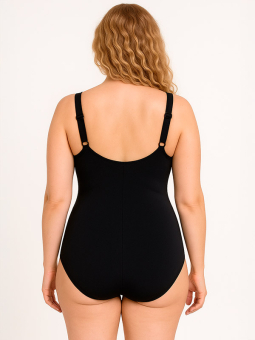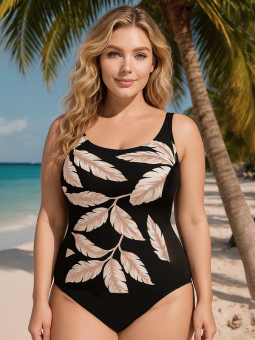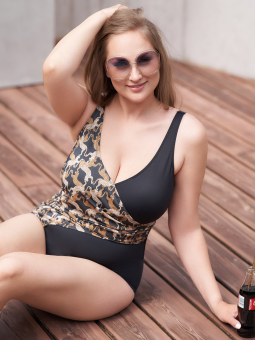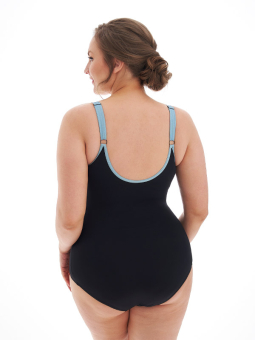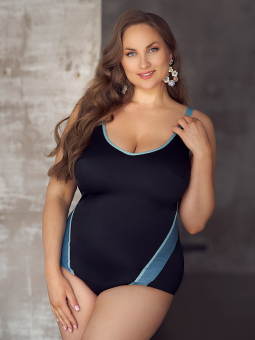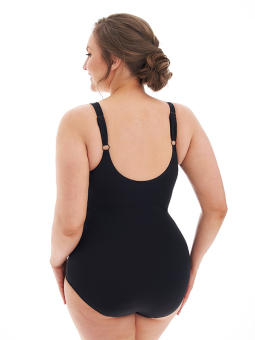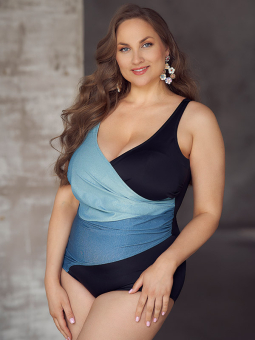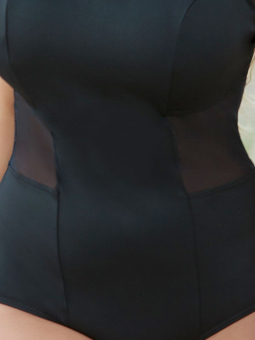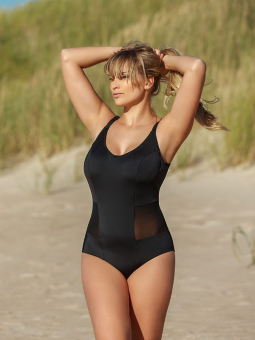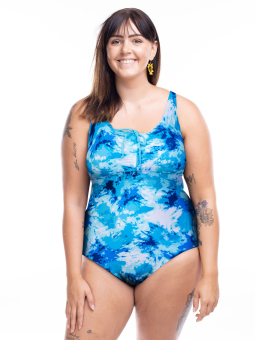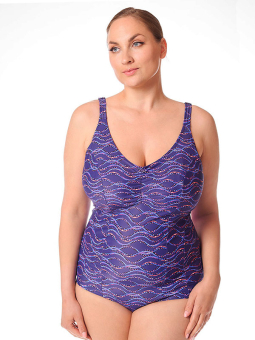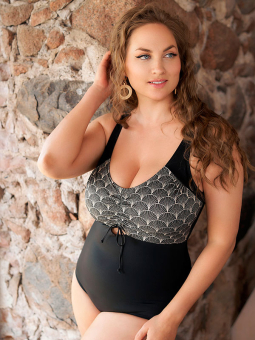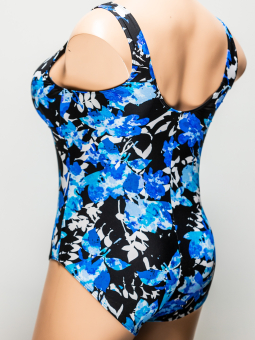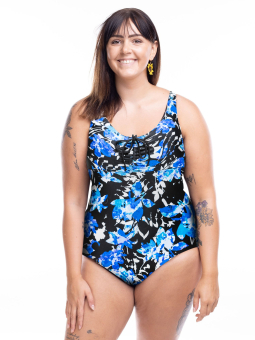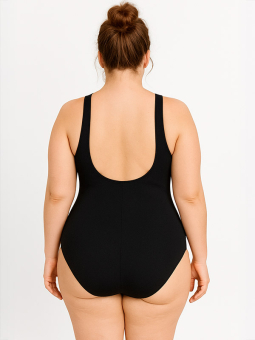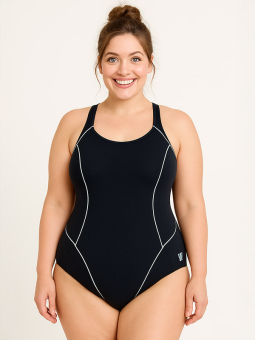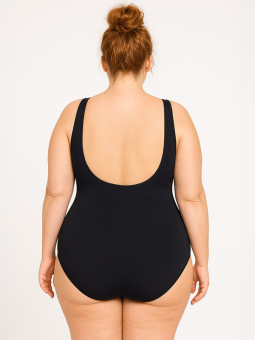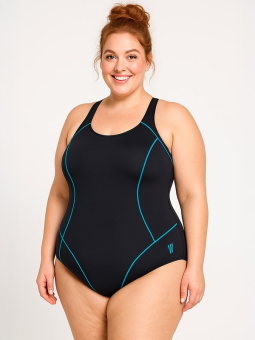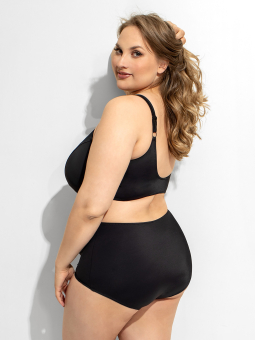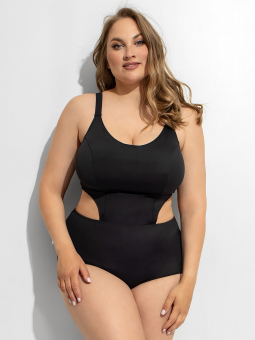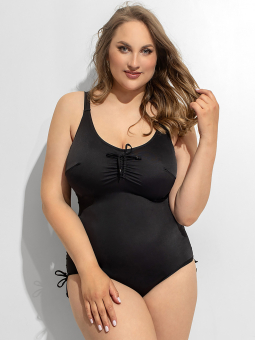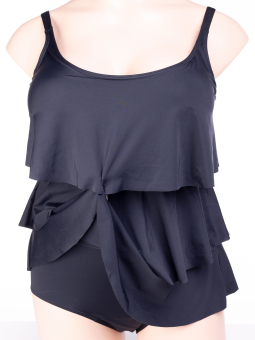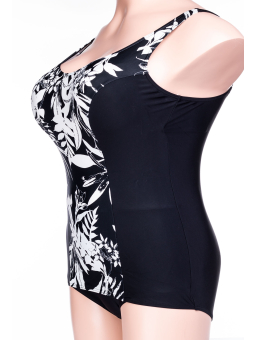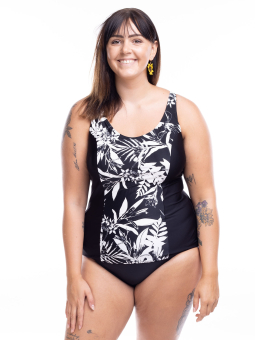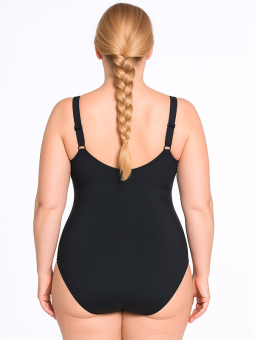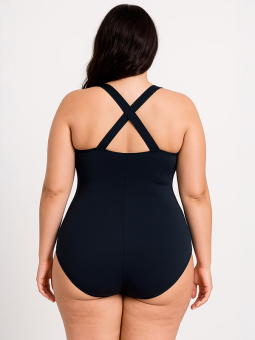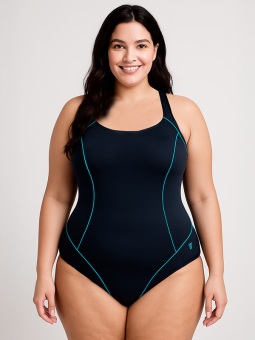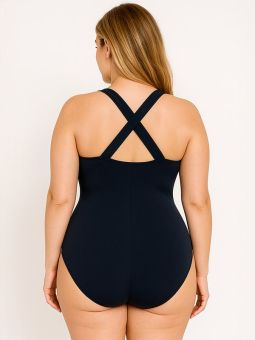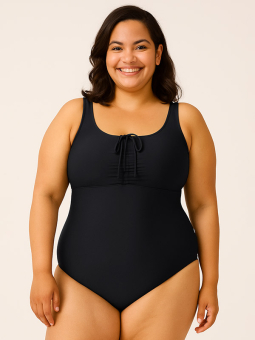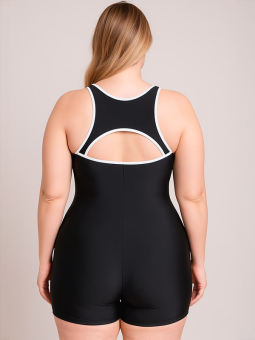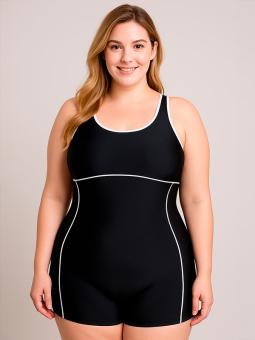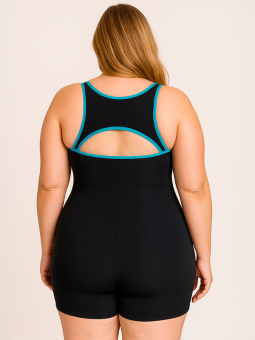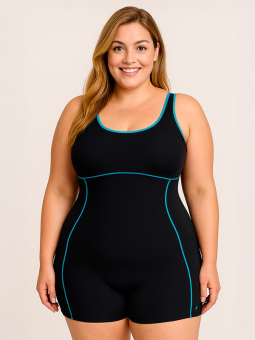Plus-Size Swimsuits
Discover the most beautiful plus-size swimsuits for your next vacation or trip to the swimming pool. If you're a water lover who wants to cover your stomach but still show off your gorgeous curves, a swimsuit is the perfect choice. Worried about straps slipping down? Choose a swimsuit with a cross-back design for maximum support. Not a fan of showing too much thigh? Opt for a swimsuit with legs. These are very popular and do the job perfectly.
-
Mirou Swimsuit Dobbelt forstykke med skåle49.95EUR42, 44, 46, 48, 50, 52, 54, 56, 58, 60
-
Plaisir Swimsuit Maveskjuler effekt109.95EURMultiple sizes
-
Plaisir Swimsuit WAVE89.95EURMultiple sizes
-
Plaisir Swimsuit WAVE109.95EURMultiple sizes
-
Plaisir Swimsuit With underwire84.95EURMultiple sizes
-
Mirou Swimsuit49.95EUR52, 54, 56, 58
-
Plaisir Swimsuit GLOW - Med bøjle114.95EURMultiple sizes
-
Plaisir Swimsuit SEA SHELL - Uden bøjler94.95EUR42, 44, 46, 48, 52, 56
-
Mirou Swimsuit Dobbelt lag ved barmen54.95EUR52, 54
-
Mirou Swimsuit54.95EUR42, 44, 46, 52, 56, 58, 60
-
Mirou Swimsuit54.95EUR42, 44, 46, 48, 50, 52, 54, 56, 58, 60
-
Plaisir Swimsuit Med bikini look79.95EUR44, 46, 50, 52, 54
-
Plaisir Swimsuit Med bøjler og rynkebånd84.95EURMultiple sizes
-
Mirou Swimsuit Flæser - God pasform59.95EUR56, 58, 60
-
Mirou Swimsuit Regulerbare stropper54.95EUR58
-
Mirou Swimsuit Dobbelt forstykke med skåle54.95EUR40, 42, 44, 46, 48, 50, 52, 54, 56, 58, 60
-
Mirou Swimsuit Stropperne krydser bagpå54.95EUR42, 44, 46, 48, 50, 52, 54, 56, 58, 60
-
Mirou Swimsuit Stropperne krydser bagpå54.95EUR42, 44, 46, 48, 50, 52, 54, 56, 58, 60
-
Mirou Swimsuit Dobbelt lag ved barmen54.95EUR42, 44, 46, 48, 50, 52, 54, 56, 58, 60
-
Mirou Swimsuit54.95EUR42, 44, 46, 48, 50, 52, 54, 56, 60
-
Mirou Swimsuit54.95EUR42, 46, 48, 50, 52, 54, 56, 60
The History of the Swimsuit
In ancient times, people naturally swam naked. It wasn't until 1670 that women, as the first, began wearing a form of swim dress. However, it was nothing like what we know today. They resembled real dresses with long sleeves and large skirts extending below the knee. It must have been a very claustrophobic experience to be fully clothed in water. Definitely not very comfortable.
In 1737, an order was issued that prohibited women from bathing publicly without being covered, laying the foundation for developing the "swimsuit." By the 1800s, the style had evolved into a kimono and short pants. Definitely a step in the right direction but still far from where we are today.
By the mid-1800s, swimsuits began to be made from sweat-wicking materials like serge and flannel. These suits often had a more tailored fit than earlier versions but still covered the woman's chest and were necessary for public bathing.
In the early 1900s, new materials like nylon and lycra made swimsuits more breathable and elastic. The design of swimsuits also changed during this period, with experimentation in various cuts and shapes.
In the early 1900s, an Australian swimmer brought a one-piece swimsuit to the USA. However, she was arrested because the suit revealed her arms, legs, and neck. This gradually changed and marked the beginning of the swimsuit we know today.
Since then, swimsuits have undergone many design changes, from high necklines, open backs, cut-out patterns, extra breast support, and adaptations for different activities like swimming, surfing, and other water sports. Today, many types of swimsuits are available, from sporty styles to more trendy designs, made in various materials designed to suit different body types and activities.
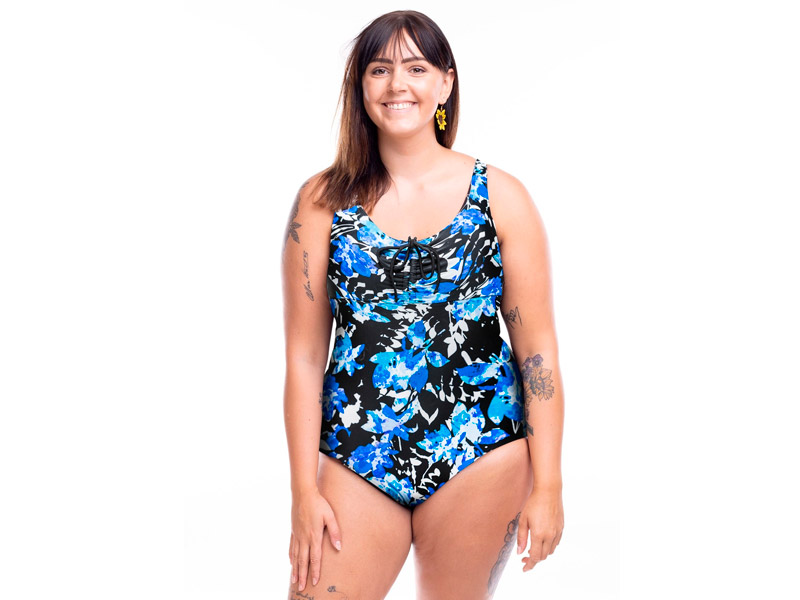
Swimsuits with Patterns, Prints, and Colors
Plus size swimsuits don't always have to be plain black. You can easily find beautiful colors, stunning patterns, or lovely prints. Plaisir plays a lot with colors, which is clearly visible in their swimsuits. They often combine solid-colored areas with beautiful prints, creating stunning, impactful swimsuits that look and feel exclusive.
For Those Who Love to Swim
If you love swimming and want full freedom of movement, the swimsuit is the best choice. It provides the least friction, resulting in faster movement through the water—definitely a big plus.
How Much Does a Swimsuit Stretch?
This is important to note because swimsuits behave differently depending on the material. One might think the same material is used across the board, but that is not the case. Price and quality go hand in hand, and generally, the more expensive a swimsuit is, the better the quality and material.
The expensive swimsuits from Plaisir are made from very strong material that provides excellent support and shape but is less elastic. It holds its form consistently, even in water. Cheaper swimsuits are more elastic and will stretch when you enter the water. In this case, it is advisable to choose one size smaller than usual if you plan to swim.
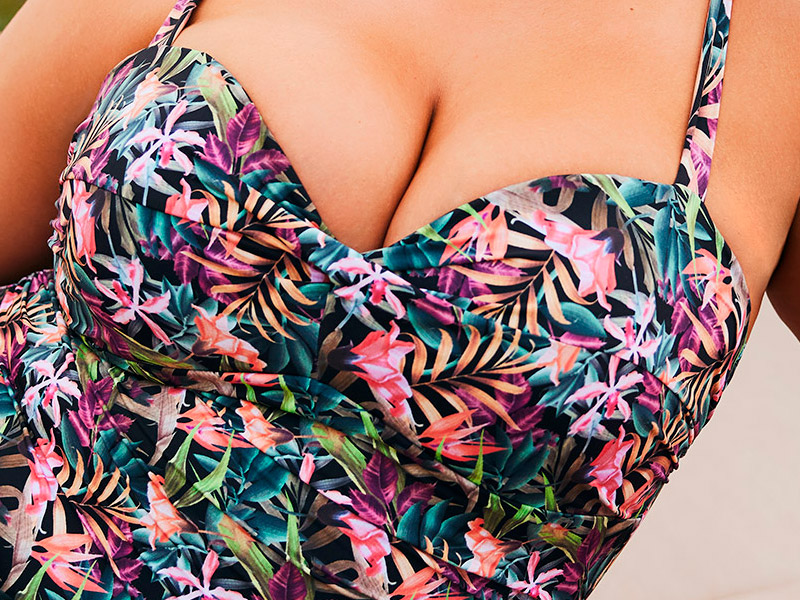
Large Bust and Swimsuits
If you have a large bust, it is crucial to choose a quality swimsuit that can support and hold your bust where it should be. It's uncomfortable to worry about something slipping out. Swimming should be fun, even with a large bust. Choose a swimsuit made from durable material. Generally, the cheaper the swimsuit, the thinner the material. Price and quality often go hand in hand. Quality swimsuits provide better bust support, which is essential for larger busts.
How Often Should You Replace a Swimsuit?
Like everything else, a swimsuit doesn't last forever, and that would be boring. You could wear the same one until it's worn out, but it's more fun to have various options. Imagine wearing the same shirt every day until it was worn out. Instead, buy different swimsuits that differ in color and model. Perhaps use a standard swimsuit for swimming pool visits and switch to a swim dress for the beach.
Swimwear and Saunas
Is it okay to wear swimwear in the sauna? In public areas like swimming pools, it's natural to wear your swimwear in the sauna. At home, you might prefer not to. However, wearing a swimsuit in high heat isn't ideal and can damage it. Using a towel instead can help protect both the swimsuit and your hygiene.
Curvii Designs Swimsuits
At Curvii.dk, we don't just sell swimsuits from our suppliers. We actively contribute to design improvements based on customer feedback. For example, we developed a swim dress with a longer skirt because customers requested more coverage for their thighs.
Various Types of Swimwear
- Swimsuit
- Swim dress
- Bikini
- Tankini
- Swimwear accessories
Do You Have Questions?
If you're unsure about which size or model suits you best, don't worry. Our swimwear experts are ready to help. Contact customer service here.


 | EN
| EN
